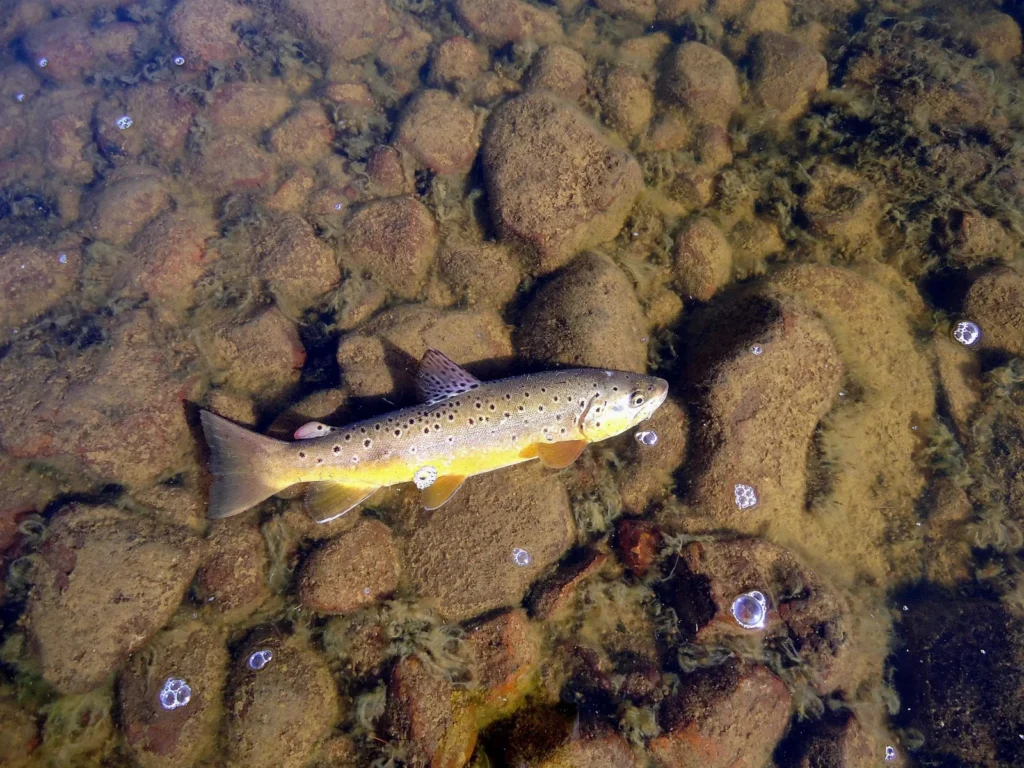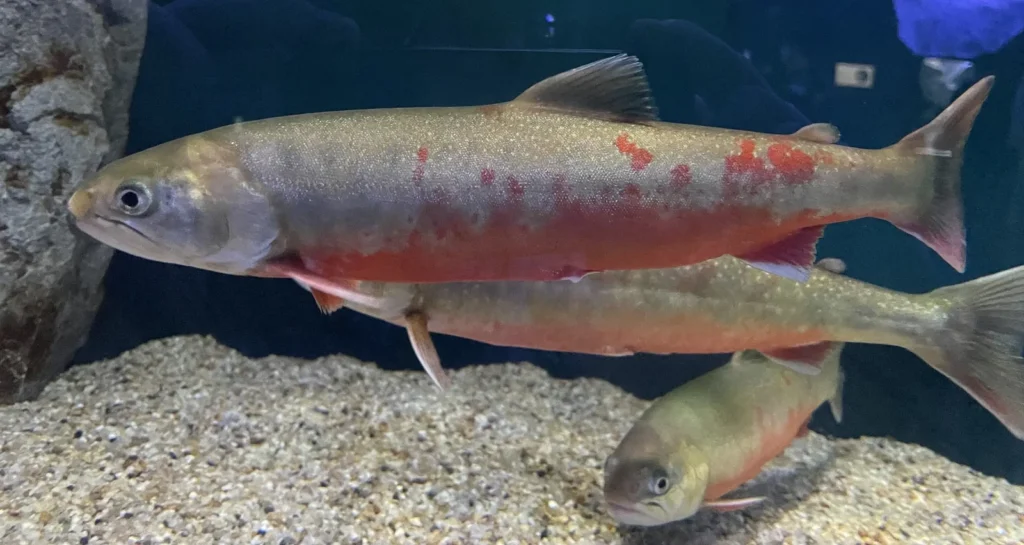Arctic Palia (Salvelinus alpinus), or arctic char,- this is one of the hardiest representatives of salmon fish. It lives in the cold waters of the Northern Hemisphere and is one of the few fish that can live in both fresh and sea water.
🔹 Why is Arsonist Arctic unique?
✔ Can live in extremely cold water (-1.8°C to +10°C)
✔ It is found in rivers, lakes, and coastal sea waters
✔ It has a wide range of colors - from silver to bright red
✔ It is an important commercial fish and a popular sport fishing destination
✔ One of the northernmost fish species, even found in Arctic waters
This fish is a true master of survival, able to adapt to harsh conditions in which other species would not be able to exist.

Scientific classification
🔬 Taxonomy of the Arctic arsonist:
✔ The Kingdom: Animals (Animalia)
✔ Type: Chordal (Chordata)
✔ Class: Lucheperi pisces (Actinopterygii)
✔ Row: Salmonoid (Salmoniformes)
✔ Family: Salmon products (Salmonidae)
✔ Gender: Chars (Salvelinus)
✔ View: Salvelinus alpinus
📌 Interesting!
Arctic palia is one of the closest relatives of pstrug (trout) and salmon, although it has significantly greater cold tolerance.
Description and anatomy
🔹 Appearance:
✔ The body is elongated and streamlined - adapted for fast swimming
✔ Color depends on the habitat and time of year:
* Silvery In marine populations
* Dark green or olive with a reddish belly in freshwater forms
* Males turn bright red or orange during spawning
✔ It has an adipose fin characteristic of salmonids
✔ The mouth is large, with numerous sharp teeth - adapted to a predatory lifestyle
🔹 Sizes:
✔ Length: from 30 to 90 cm, but individuals can reach up to 120 cm
✔ Weight: on average 1-5 kg, the largest instances-k 15 kg
✔ Life span: 15-25 years old
📌 Interesting!
The biggest Arctic arsonist, weighing 15.9 kg, caught in Canada.

Range and habitat
🌍 Where does the Arctic Palia live?
✅ Arctic and subarctic regions of the Northern Hemisphere
• Europe: Norway, Iceland, Sweden, Finland, Russia
• North America: Canada, Alaska, Greenland
• Asia: Siberia, Kamchatka
🔹 Living environment:
✔ Freshwater lakes and rivers - spawn and grow in cold water bodies
✔ Coastal sea waters - many populations make seasonal migrations to the ocean
✔ Deep lakes up to 200 m deep "some arsonists have adapted to life at great depths
📌 Interesting!
Arctic palia can live in bodies of water that freeze in winter, remaining active at a water temperature of about 0°C.
Life cycle and reproduction
🔹 Life stages:
1️⃣ Caviar - it is deposited on the rocky bottom in cold rivers and lakes in autumn
2️⃣ Fry ("parr") - live in fresh water, feeding on small invertebrates
3️⃣ Young individuals ("smolty")” - part of the population migrates to the sea for growth
4️⃣ Adults - return to fresh water to spawn
5️⃣ Post-spawning fish (”Celts") - exhausted, some of them survive and return to the sea
📌 Interesting!
Arctic palia can spawn several times in a lifetime, unlike some salmon species, which die after the first spawning.
Nutrition and lifestyle
🔹 What does Arctic Palia eat?
✅ In the river and lake: insect larvae, plankton, shellfish, small fish
✅ In the sea: herring, krill, small crustaceans, squid
🔹 Behavior features:
✔ It has a fast metabolism, which allows it to grow even in cold water
✔ Leads a solitary lifestyle or forms small flocks
✔ It is a predator and can attack even juveniles of its own species
📌 Interesting!
Some arsonist populations become by cannibals, if there is not enough feed in the reservoir.

Arctic Palia and man
🔹 Main threats:
❌ Illegal fishing and poaching
❌ Climate warming and the disappearance of cold water bodies
❌ Heavy metal contamination of water bodies
⚠ Population status:
🔸 In the wild – it is under threat of reduction
💥 Grown in aquaculture-a popular breeding facility in Canada, Norway and Iceland
🔹 Human Value:
✔ Source of protein and omega-3 fatty acids
✔ A popular dish among northern peoples (Greenlanders, Aleuts, Sami)
✔ It is used in delicatessen dishes (smoked, dried, pickled)
📌 Interesting!
Arctic palia - this is one of the few fish that can be eat rawlike Japanese sashimi.
Conclusion
🐟 Arctic palia is not just a fish, but a true survivor of the harsh northern waters.
🌍 Preserving this unique fish is an important step in protecting cold-water ecosystems and biodiversity.
📢 Have you ever tried the Arctic arsonist? How do you like the taste of it? Share your impressions! 😋
